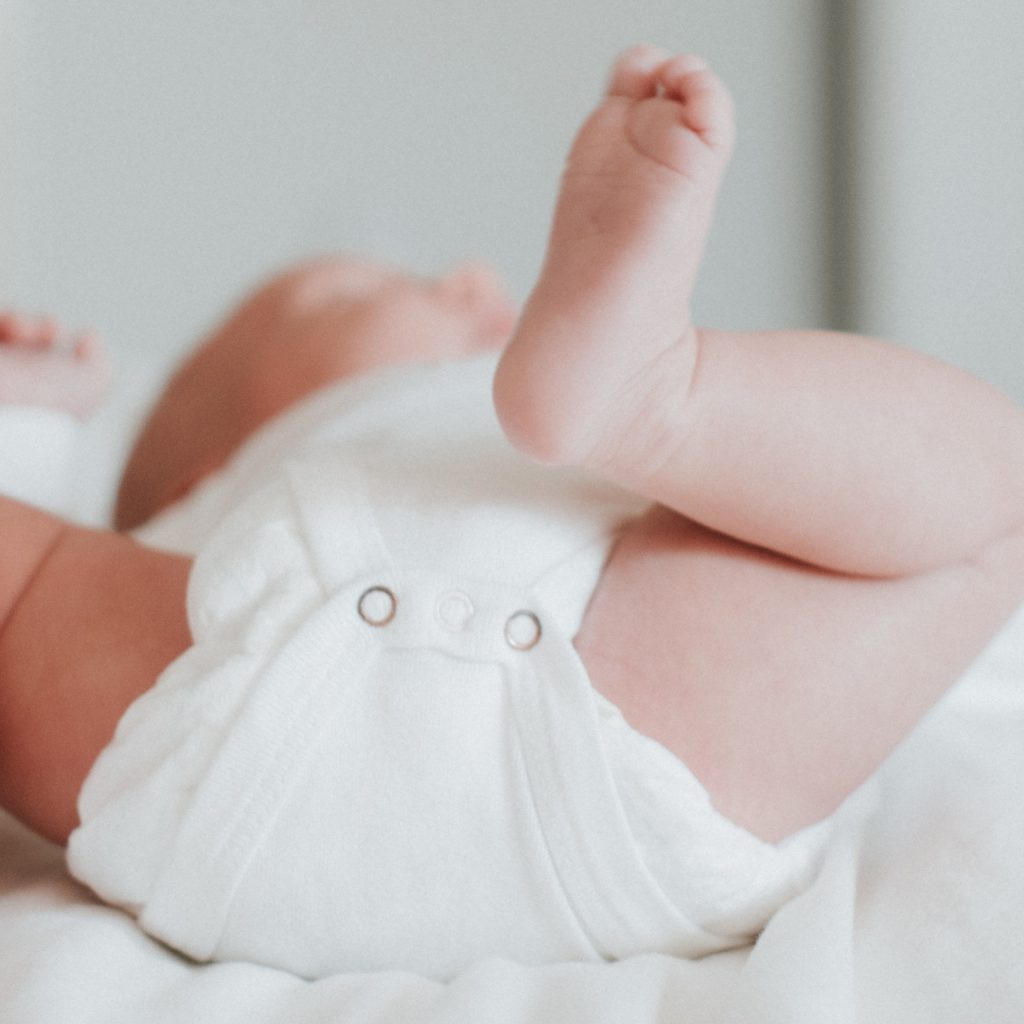Developmental dysplasia of the hip (DDH) is a condition where the ball and socket joint of the hip doesn’t form properly.

Did you know…?
- Approximately 1 in 10 newborn infants have hip instability. That means the hips can be wiggled in the socket because of loose ligaments. 90% tighten up naturally after birth.
- Approximately 1 in 100 infants will need treatment for DDH.
- Approximately 1 in 500 infants has a completely dislocated hip.
[Source hipdysplasia.org]
Diagnosing DDH
Your baby’s hips will be checked as part of the newborn checks within 72 hours of birth, and again when they are 6 to 8 weeks.
The examination involves gently moving your baby’s hip joints to check if there are any problems. It shouldn’t cause them any discomfort.
If a doctor, midwife or nurse thinks your baby’s hip feels unstable, they should have an ultrasound scan of their hip between 4 and 6 weeks old.
Babies should also have an ultrasound scan of their hip between 4 and 6 weeks old if:
– there have been childhood hip problems in your family
– your baby was born in the breech position (feet or bottom downwards) after 28 weeks of pregnancy
– If you have had twins or multiples and 1 of the babies was in the breech position, each baby should have an ultrasound scan of their hips by the time they’re 4 to 6 weeks old.
Sometimes a baby’s hip stabilises on its own before the scan is due, but they should still be checked to make sure.
Pavlik harness
Babies diagnosed with DDH early in life are usually treated with a fabric splint called a Pavlik harness.
This secures both of your baby’s hips in a stable position and allows them to develop normally.
The harness needs to be worn constantly for 6 to 12 weeks and should not be removed by anyone except a health professional.
Your hospital will provide detailed instructions on how to look after your baby while they’re wearing a Pavlik harness.
They’ll let you know:
– how to change your baby’s clothes without removing the harness – nappies can be worn normally
– cleaning the harness if it’s soiled – it still should not be removed, but can be cleaned with detergent and an old toothbrush or nail brush
– positioning your baby while they sleep – they should be placed on their back and not on their side
– how to avoid skin irritation around the straps of the harness – you may be advised to wrap some soft, hygienic material around the bands
Surgery
Surgery may be needed if your baby is diagnosed with DDH after they’re 6 months old, or if the Pavlik harness has not helped.
The most common surgery is called reduction. This involves placing the femoral head back into the hip socket. Reduction surgery is done under general anaesthetic.
Your child may need to wear a cast for at least 12 weeks after the operation.
Their hip will be checked under general anaesthetic again after 6 weeks, to make sure it’s stable and healing well.
After this investigation, your child will probably wear a cast for at least another 6 weeks to allow their hip to fully stabilise.
Some children may also require bone surgery (osteotomy) during an open reduction, or at a later date, to correct any bone deformities.
Late-stage signs of DDH
The newborn physical screening examination, and the infant screening examination at 6 to 8 weeks, aim to diagnose DDH early.
But sometimes, hip problems can develop or show up after these checks.
It’s important to contact a GP as soon as possible if you notice your child has developed any of the following symptoms:
1 leg cannot be moved out sideways as far as the other when you change their nappy
1 leg seems to be longer than the other
1 leg drags when they crawl
a limp or “waddling” walk
Your child will be referred to an orthopaedic specialist in hospital for an ultrasound scan if your doctor thinks there’s a problem with their hip.
For more information on hip dysplasia click here.
